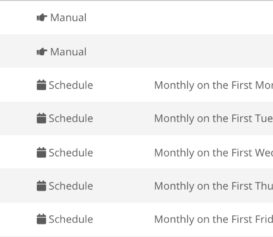There are about a million posts that cover “the right way” to do property inspections – and they’re all usually the same boilerplate tips. But what about the most common inspection mistakes teams are making? Building your team an efficient property inspection strategy – when, where, and how to perform inspections – is critical to the health of your business, and can put your organization above the rest.
Here’s some ways your team can avoid inefficient, cumbersome mistakes when it comes to inspections:
Mistake #1: Just Being Reactive Instead of Proactive
Sometimes management teams don’t perform property inspections until they have to – whether that’s because of timely moves-outs, regulatory requirements, insurance, etc. The truth is, your team should be performing regular inspections as an act of preventive maintenance.
It’s never a bad idea to log quick observations – especially when your team is already onsite for another job.
Several teams we work with have a fast 4-point unit inspection ready to deploy anytime they visit for repairs, including:
- Checking the smoke and carbon monoxide detectors
- Checking heating and cooling equipment, and hot water
- Checking locks and entryway
- Checking fire escapes and/or areas of egress
It’s a good place to start, and an easy way to do regular checks on safety and security without allocating any extra time in your schedule.
Regular inspections (weekly or otherwise) are also great for expensive equipment and assets, or general property walks – especially during weather-intense seasons where leaks or other issues can quickly grow into massive headaches.
Bottom line: The more often you have eyes on expensive assets, the less likely you are to get an expensive surprise.
Mistake #2: Relying On Paper Inspections
Imagine trying to do your quick, 4-point check, and having to pull out a flimsy paper form. And then having to fax, scan, or submit that form to the main office. And THEN having to upload any pictures separately. Or worse, forgetting that form when you’re onsite and not being able to record the inspection at all. All possible scenarios when you’re dealing with paper inspections.
While this mistake is becoming less common, it’s one of the biggest pitfalls teams can make.
Relying on paper property inspections isn’t just outdated – it’s inflexible, risky, and slow – and can have hugely averse impacts on your business. For example:
- Printed paper means you have a limited space for notes, can’t easily add images, and can’t make changes.
- There’s also only one copy, which is only accessible in one physical space at a time…
- …and can get easily lost or misplaced, destroying critical records.
Paper inspections invite all kinds of administrative headaches, from your staff on-the-ground to the folks back at the office. It’s costing your business time – and money.
Bottom line: Getting off of paper inspections is table stakes for competitive property management organizations.
Mistake #3: Creating Inspections That Are Harder Instead Of Smarter
Of course, taking your paper inspection form and just transferring it to an iPad doesn’t magically make inspections more efficient.
The best inspection solutions help your team save time & shave off administrative processes. Here’s how:
- Inspections should be dynamic – fields should adapt to what your team is seeing in the field so they can save time, stick to the details that matter, and skip the ones that don’t
- They should kick off next steps – if your team finds something wrong, that information should help trigger any follow-up work so issues are resolved more quickly
- Inspections should be accessible – team members who need to know information from inspections should be able to easily pull it up, no matter where they are
- They should be customized, and not one-size-fits-all – the more specific you can get (for property types, regions, equipment, etc.), the more time saved and the more details captured
If you’re ready to make the jump to digital inspections, check out our guide on choosing the right inspections solution for your team here.
Bottom line: Go for inspection tech that makes your team sharper and more efficient – not just a digital replica of your paper form.
Tweaking your inspections process (and the tools you use to log, track, and keep inspections) can be the difference between missed details that increase risk, or uncovered information that saves your team time, effort, and money. Whether you’re thinking about moving off of paper or evaluating platforms, make sure you avoid easy mistakes – and build a repeatable, scalable process that sets your team up for success.
Want to share this with your colleagues? Here’s our summary video on what NOT to do when it comes to inspections:




